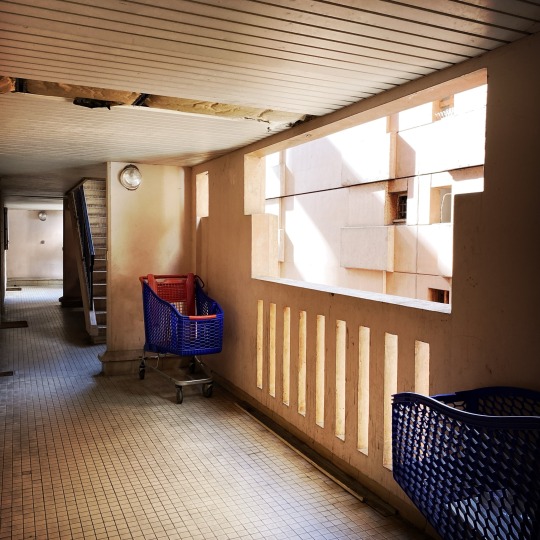#caddies
Photo

https://www.junedays.com/
#Junedays#boat#accessories#bag#picnic#trip#coolers#caddies#shop#typography#type#typeface#font#ITC Garamond Std#Messina Sans Mono#2023#Week 21#website#web design#inspire#inspiration#happywebdesign
5 notes
·
View notes
Photo

Hypothetical flooding scenarios are tested in the polders adjacent to the Anosizato district. The simulations use high resultion lidar data converted into 50cm grid depth maps to be computed with Caddies. The brown color indicates streamlines along which water would be likely to flow according to the watershed simulation in QGIS, drawing meanders through the rice fields.
#eth#fcl#chairgirot#designresearchstudio#madagascar#antananarivo#teaching#pointcloudmodel#simulation#floodsimulation#laserscanning#caddies#exeter#qgis#watershed#EthZurich
3 notes
·
View notes
Text
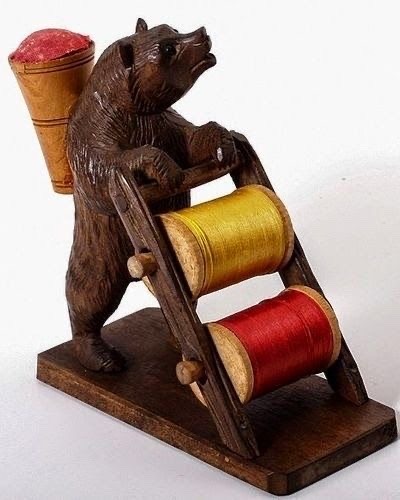

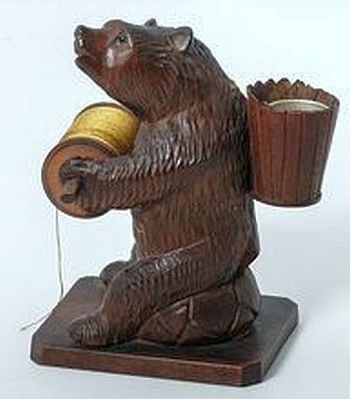
Bear sewing caddies and spool holders (c. 1880’s)
20K notes
·
View notes
Text
Golf and Slavery: Its Intersection in the South

Golf is a game with a rich history of class consciousness. A game played by masters and their servants or caddies. Wealthy early golfers did not just have a single caddie to carry their bag and clubs but a forecaddie as well to spot where their golf ball landed. This is where we get the warning cry ‘fore’ from, as caddies and then players loudly announce the impending arrival of a struck golf ball. Golf originated in Scotland and then, England, but soon emigrated, as a pastime, to the new world in America and Australia. Games like golf were, in the 19C and early 20C, for those with the necessary wealth to indulge in recreational activities. The masters of these colonial times were partial to the odd spot of golf. Golf and slavery: Its intersection in the South of the United States of America was not altogether uncommon.
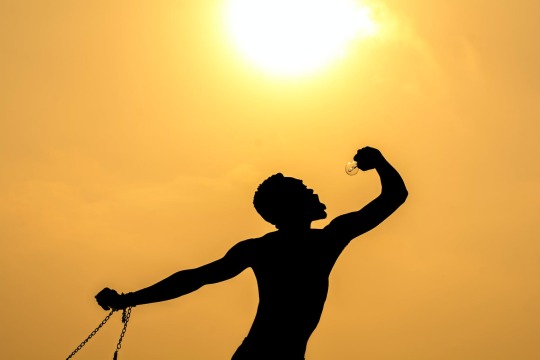
Photo by Clement Eastwood on Pexels.com

Golf Player (1898) print in high by New York Public Library is licensed under CC-CC0 1.0
Slavery Did Not Go Away in America
Slavery is pretty hard to get one’s head around in the modern age, as a concept and reality for the human beings enslaved. That white slavers, farmers, and overseers worked dark skinned human beings as animals by beating them with whips and without pay is almost unfathomable in the 21C. However, this kind of disgraceful exploitation continued on in the southern states of America until 1942. Slavery did not end with the Civil War in 1865 and the Emancipation Proclamation. 4 million black slaves were in existence at the conclusion of the Civil War. A number of states in the south brought in the Black Codes immediately after the war. Around 800, 000 African Americans were entrapped by laws especially designed to enslave them in debt for things like vagrancy, street drinking, breaking contracts, contact with a white woman, and whatever the white elite could think up. Large fines and court costs saw them incarcerated before plantation owners and mining bosses offered to pay these fines under peonage arrangements. The black man could work off the debt and thus was enslaved by debt, often, doing the same work he did as a chattel slave prior to emancipation. The difference being that the debt slave was no longer worth the hundreds and sometimes thousands of dollars he was when a chattel slave. These debt slaves were treated far worse and many were worked to death in mines and quarries in quick time. These arrangements have laid the foundations for a substantial prison industry, where prisoners, many of them Black work for the state and private enterprise as an economic boon.
“a new form of inhumane exploitation in the United States, where they say a prison population of up to 2 million – mostly Black and Hispanic – are working for various industries for a pittance. For the tycoons who have invested in the prison industry, it has been like finding a pot of gold. They don’t have to worry about strikes or paying unemployment insurance, vacations or comp time. All of their workers are full-time, and never arrive late or are absent because of family problems; moreover, if they don’t like the pay of 25 cents an hour and refuse to work, they are locked up in isolation cells.”
- (https://komornlaw.com/the-prison-industry-in-the-united-states-big-business/#:~:text=Alongwithwarsuppliesprison,and21ofofficefurniture.)
“Black Americans are incarcerated in state prisons at nearly 5 times the rate of white Americans. Nationally, one in 81 Black adults in the U.S. is serving time in state prison. Wisconsin leads the nation in Black imprisonment rates; one of every 36 Black Wisconsinites is in prison. In 12 states, more than half the prison population is Black: Alabama, Delaware, Georgia, Illinois, Louisiana, Maryland, Michigan, Mississippi, New Jersey, North Carolina, South Carolina, and Virginia.”
- (https://www.sentencingproject.org/reports/the-color-of-justice-racial-and-ethnic-disparity-in-state-prisons-the-sentencing-project/)

Photo by Jopwell on Pexels.com
Slavery’s Shadow Over Southern Golf
When we are out on the golf course and it is a lovely day, something like slavery and its aftermath seems a long way away. However, when I watch the Masters on TV and see all those caddies in those white overall jumpsuits I am reminded of golf and slavery: Its intersection in the South. Most of those caddies were African American in the not too distant past. Still today, there are plenty of them performing what used to be a very menial role. Golf at the pointy end may now be big business but its roots are shadowy for sure. Until Tiger Woods came along black golfers were rare on the ground and largely invisible.
“It is most unlikely that we shall ever discover the identity of the first African American to swing a golf club on the North American mainland. Regarded by the ruling society as marginal at best, the first blacks to strike a golf ball mattered little to those who introduced the game on the shores of colonial America. They saw no reason to document who those black people were. Nevertheless, there is evidence to suggest that the event probably occurred in the latter half of the eighteenth century on the South Carolina coast. By that time, the city of Charleston was a thriving commercial center with an unusual abundance of social and cultural activities. A large number of the merchant class were transplanted Scotsmen and Englishmen who brought their passion for golf with them when they crossed the Atlantic. By 1786, they were instrumental in establishing the South Carolina Golf Club in Charleston, acknowledged today by many authorities to be the first golf club in the United States.
Hunting was a popular pastime among slave owners during the colonial era and they frequently took their bonded servants with them on hunting trips. The slaves were given the laborious (and sometimes dangerous) task of flushing animals into the open, retrieving downed fowls, and skinning the game that had been killed.(1) In The Carolina Lowcountry Birthplace of American Golf, authors Charles Price and George C. Rogers, Jr. surmise that the slaves were similarly assigned the onerous duties associated with the game of golf. They speculate that slaves were used as caddies by members of the South Carolina Golf Club…..
Over the next few decades, golf enjoyed a fair degree of popularity in both South Carolina and Georgia. At Savannah Golf Club, founded in 1796, as well as at South Carolina GC, slaves probably were used for two main purposes. Since there were no greens as we know of them today, the slaves were used as "finders." In this role they were required to determine the position of the hole and mark it with a suitable object so that an upcoming player would know its location. The South Carolina Golf Club played the game on Harleston Green, a public park in the center of Charleston that was also used by other city inhabitants for horse races, cricket matches, picnicking, and strolling. The second important responsibility entrusted to the slaves was to yell "Fore" to alert other park users of an approaching shot. At the end of the game, these fore caddie/slaves undoubtedly were given the golf clubs to clean, polish, and store while the slave owner rested and enjoyed refreshments. It was an ideal, but probably perilous, opportunity for a slave to secretly test his master's golf equipment. Considering human nature, it would be naive to think otherwise.”
- (https://archive.nytimes.com/www.nytimes.com/books/first/s/sinnette-fairways.html#:~:text=(1)InTheCarolinaLowcountry,theSouthCarolinaGolfClub.)

Photo by Anete Lusina on Pexels.com
I have been reading a slave’s fist hand account of his life on the cotton and sugar plantations in the American south mid- 19C and it is telling. It is hard to imagine a more challenging existence. Worked brutally from dawn to dusk to then return to a shared cabin with no bed, windows, kitchen or creature comforts of any kind. You had to make your own meal from a hunk of bacon, which hung from a nail (often infected with maggots), and cornmeal. You slept on the bare ground or a plank of wood if lucky. You were beaten with the lash if late for work or a hundred different other reasons. Plantation owners would get drunk and rape the female slaves and beat the males for fun. A police state existed, where troops of slave catchers roamed at night to prevent runaways escaping. A Black could not go anywhere without being challenged by a white person. They could not use the postal system or go into a shop without a signed slip from their master. They were the chattel property of their white owners.
This set up existed for hundreds of years, with one of the first ships to land in Virginia in 1619, before the Pilgrams, a slaver captured from the Portuguese. The descendants of these slaves, a family called the Tuckers, still lives in Hampton to this day. Americans like to polish their history, as most folks do, by focusing on the more palatable parts. The reality is that slavery was there at the beginning of the story and its influence has been far and wide. You cannot just end slavery and its impact upon a culture like a tap being turned off. We have seen how the South resisted all their slaves being freed and trapped some 800, 000 of them in peonage slavery. The southern economy had and has been heavily dependent upon slave labour.
The bigger story is that the North and the rest of the world built their financial wealth on the back of slavery. The industrial revolution was fired by both technology and paid for with the fruits of slavery. The Western economy was pumped up with money from cotton thanks to the cotton gin and slavery in the south. Our modern financial economies have their roots in this time, according to studies by historical economists.
https://www.youtube.com/watch?v=M1-zI-lwn8M
The fact that we are wealthy enough to have the time to play golf in the modern era is built on the back of this economic surge into modernity. Think about the economic value of 4 million slaves as capital.
“The economic value of the 4 million slaves in 1860 was, on average, $1,000 per person, or about $4 billion total. That was more than all the banks, railroads and factories in the U.S. were worth at the time.”
- (Bloomberg, 2021)
Excerpt from Golf Courses & The Wall Of Slavery
“But my focus is on the golf course – tree-lined fairways, not links; Scottish pot and hourglass fairway bunkers, seven on one hole; elegant, bent grass greens I can almost read from 3,000 feet in this crisp glancing morning light; and lots of water too, beautiful ponds and streams in which to lose lots of balls. As always, I enjoy this golf course assessment exercise. Golf is a magical pas de deux between the mind and the body, a sport of enormous elegance and technical sensitivity, a pastime with numerous lifestyle metaphors (forget the previous shot, focus on the present shot; don't attempt what you can't do;...), exceedingly more cerebral than the casual fan might think. It is a game without defense. And, it is the most subtle, near fickle, blend of power and finesse – physical and mental – of any sport yet invented. But these days something is different; I mean really different: the palms of my hands are not perspiring!
It was 1972, during a similar flight approach, that I became aware of my perspiring palm syndrome. With blacks only recently being allowed to play the public – even municipal – courses in my hometown, I interpreted those moist palms to be evidence of my burgeoning love for the game. During that period, typically after viewing a golf course from the air, I would rotate my face forward, close my eyes, tilt my head back onto the seat's headrest, and imagine a serene fairway, a five iron in hand, an ideal drawing shot into a slightly depressed green, and the enjoyment of every inch of a 170-yard perfect flight of the ball. Sheer pleasure; but always accompanied by perspiring palms.”
- (http://web.mit.edu/fnl/vol/133/williams.htm)
Golf In Australia
In Australia, not many First Nations Aussies play golf. It is getting a bit better with more golf clubs opening their doors to a more diverse clientele. However, this is a fairly recent occurrence, with the history of golfing in Australia being a very white bread state of affairs. Elitist Protestant Australians were the mainstay of golf clubs for decades and decades in the capital cities of Australia. Working class golf clubs eventuated in time but they maintained similar if cheaper standards when it came to who they let play golf on their courses. The truth of the matter is that if you ensure that Black people are economically disadvantaged via institutional racism and its more prosaic cousins then it is highly unlikely they are going to be able to afford to play golf, even if they were allowed to join in. Australia had its own slavery chapter called Blackbirding, where Indigenous Australians and Pacific Islanders were Shanghaied and conned into working under slave-like conditions on the sugarcane plantations in North Queensland. Pastoral Australia had plenty of Aborigines working for next to nothing on their properties for decades and decades through the 19C and 20C as well.
Colonial Australia used First Nations people whenever and wherever they could. Aboriginal and Torres Straight Islanders were not considered Australians until 1962, when a referendum was held about granting them voting and citizen rights. It wasn’t until 1965 that Queensland granted Indigenous Australians the right to vote in their state elections.
More and more people don’t know the real history of their countries and think that it matters little. They are happy to focus on their own concerns to the exclusion of anything else. Some even talk about us all being the same and today’s level playing field. The truth is when you and your family are coming from a long way down the wealth ladder it matters. The shadows of slavery and indentured servitude, then economic neglect and institutional racism, don’t disappear quickly, indeed, it takes generations to emerge from the dire poverty caused by these things. ‘I’m alright Jack!’ is not going to cut it in these circumstances. Superficial understandings and neoliberal user pays philosophies will not heal the psychological wounds and repair the economic imbalance within our nations and peoples.
Golf has become a more egalitarian pastime but the present cannot mask the effects of generations of discriminatory behaviour on non-white golfers, African Americans, and Indigenous Australians. It is time to big hearted and empower those who have been short changed when the opportunity arises.
Robert Sudha Hamilton is the author of The Stoic Golfer: Finding Inner Peace & Focus on the Fairway.
©GolfDom
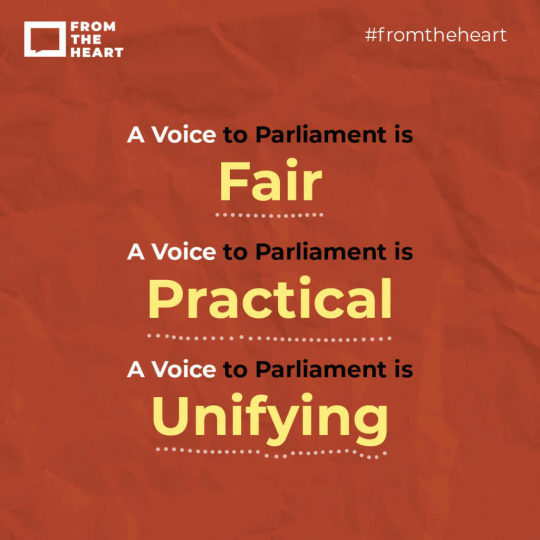
Read the full article
1 note
·
View note
Text
How Much Do Caddies Make in Professional Golf?
When you think about your dream job, does being a golf caddy come to mind?
Traveling around the world to different tournaments and getting a front-row seat to some of the game’s most exciting moments can make for an incredible career. Yet, is it a lucrative one?
If you work in the professional golf industry, the answer might surprise you! Today, we’re answering the question, “How much do…

View On WordPress
0 notes
Text

Hexagonal Tea Box with Fucus (Algae) Decoration. Designed by Lucien Bonvallet and made between 1902 and 1911 in Paris, France. Medium is embossed solid silver coated with an iridescent black finish. Musée d'Orsay inventory number: OAO 1882.
(Source: musee-orsay.fr)
#tea caddy#bottles#decorative arts#Lucien Bonvallet#early 1900s#art nouveau#french design#metal#silver#black#b&w#iridescent
3K notes
·
View notes
Quote
Gratitude helps you to grow and expand; gratitude brings joy and laughter into your life and into the lives of all those around you.
Eileen Caddy
#Eileen Caddy#motivation#quotes#poetry#literature#relationship quotes#writing#original#words#love#relationship#thoughts#lit#prose#spilled ink#inspiring quotes#life quotes#quoteoftheday#love quotes#poem#aesthetic
218 notes
·
View notes
Text
Bathtub Caddy Deco for The Sims 2
This is an object made mixing a lot of deco conversions from Sims 4 CC. The tray is from MXIMS. 7k poly each one. You can put it on your sims bathub to give a more unique look. Found in plumbings-miscellaneous. You can have both Book and Tablet version in your download folder.
DOWNLOAD HERE
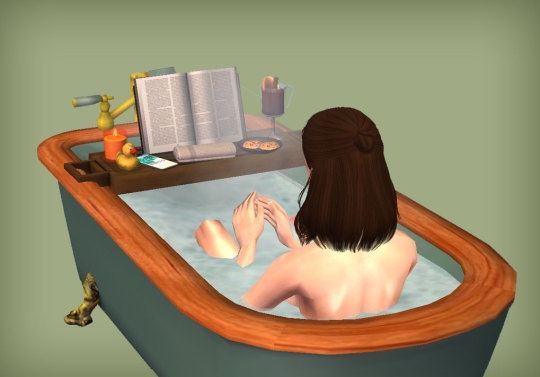

#sims 2 cc#the sims 2#sims 2 download#ts2#the sims 2 cc#ts2 download#4to2#4to2 conversion#sims 2 objects#sims 2 decor#buy mode#bathtub#caddy#tray
546 notes
·
View notes
Text
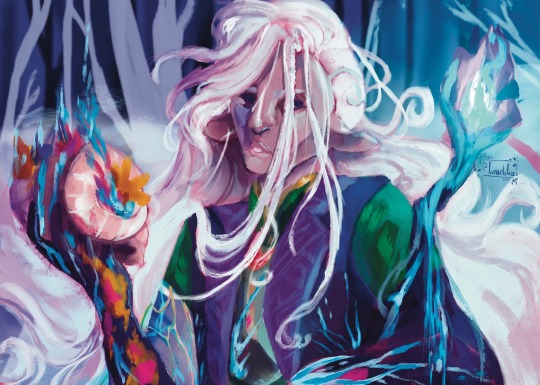
eyes of the grave pinned on the head of a hero
#cr#cr2#caduceus clay#roll performance#critical role#critical role fanart#critical role campaign 2#heheheeeee#redrew a caddy piece from last year to celebrate finishing campaign 2#i think more people need to make him spooky as FUCK#take advantage of that fucked up grave cleric appearance. he deserves it
318 notes
·
View notes
Text

Sterling silver tea caddie, 1800s, Japan.
606 notes
·
View notes
Text

sipping some tea in the Xorhaus
#caduceus clay#critical role#mighty nein#im SO artblocked and have been listening to the xorhas arc of campaign 2 for company#hoping caddy helps me get over this :^)#my art#cr
213 notes
·
View notes
Photo

Flood scenarios during the dry season for a hypothetical irrigation inflow in the polder "Antsimombohitra". The simulations are calculated with different flow intensities and time ranges, from left to right: 1m³/s for 3h, 1m³/s for 24h, 2m³/s for 24h, 1m³/s for 7days. The color scale indicates the water depth from white (0) to black (1.5m).
#eth#fcl#chairgirot#designresearchstudio#madagascar#antananarivo#teaching#pointcloudmodel#simulation#floodsimulation#laserscanning#caddies#exeter#EthZurich
0 notes
Text
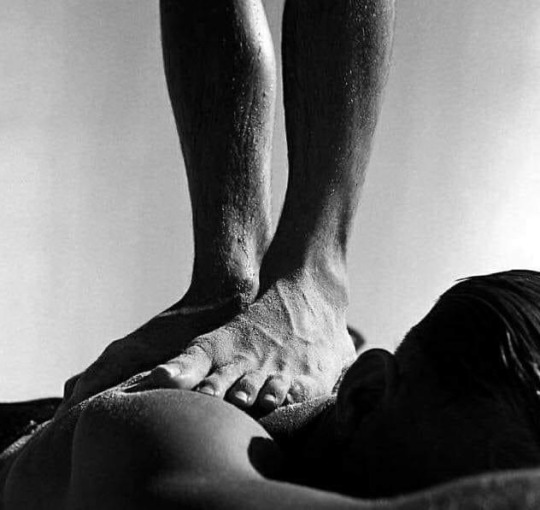
George Caddy (Australian, 1914-1983)
160 notes
·
View notes
Text

General Motors Corp, 1955
310 notes
·
View notes
Text




a caddie for the buddy ⛳️
#nhl#trevor zegras#cole caufield#anaheim ducks#montreal canadiens#shall i say: a caddie for the baddie#gifs*#a red carpet for z and all cole got was a free tims bfast#im hating this new editor give me the old one D:
404 notes
·
View notes
